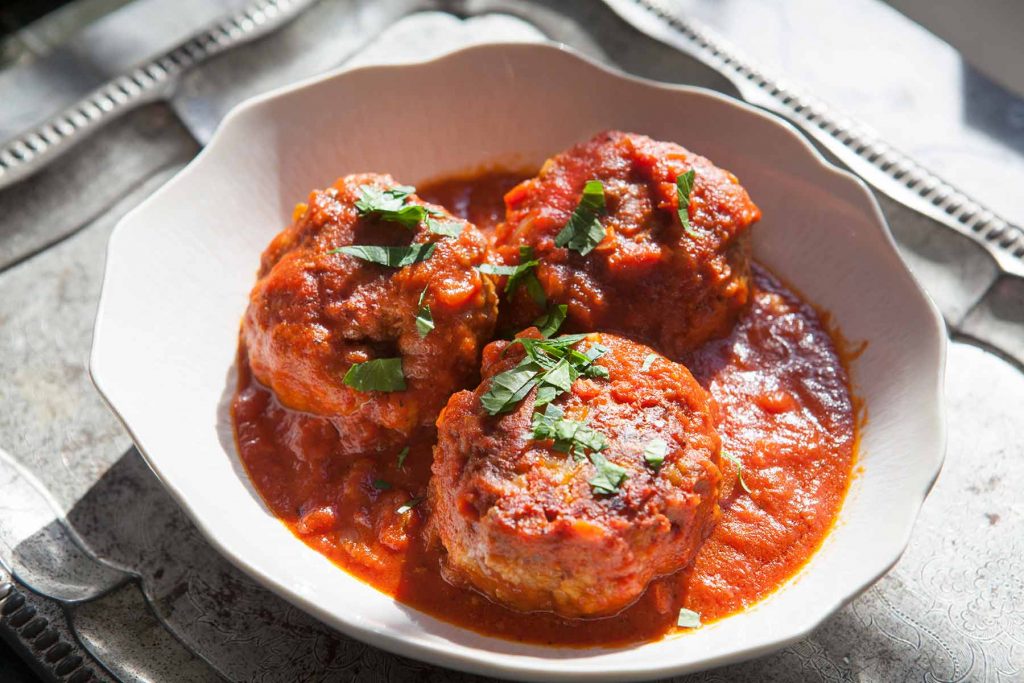Foods Around the World
A look into two very different food cultures in the world
From Algeria to Italy, colonized to a colonizer, the difference between the food cultures in each country is like a vast ocean. Even coming from a town as diverse as Iowa City, it is nearly impossible to experience the flavors of these two countries, because the options in here are simply not truly authentic.
Algeria
Boiling milk and minute couscous, where soccer games are watched in cafes. Algeria is a country whose food culture runs deep and plays a big role in not only everyday life, but the economy as well. Food trucks and cafes line the streets, creating an aroma of pizza and coffee. The number of cafes isn’t surprising, considering the amount of coffee that a typical person would drink there. Idris Kecira ’20, was born in Algeria, and explained that you almost always boil your milk before drinking it there. “It seems weird here, but if you go there and drink cold milk, they think you’re the weirdest person,” he said. This will typically be drunk with coffee and sugar in it, and is very common throughout all of Algeria. Some people will make it at home and others will go to cafes for it. The cafes in Algeria are a popular place to meet up. “It’s part of the culture. When you go to watch a soccer game, everybody just watches it at the cafe. [It’s like what] everybody does here for Buffalo Wild Wings,” Kecira said.
In addition to drinking a lot of coffee, couscous is the base of many meals there. Couscous, a grain similar to rice, can be made with vegetables, meat, or even cinnamon. While couscous is a go-to food, a different food helps blend culture and religion together. Bourek is a food that is only made during Ramadan, an Islamic holiday where they fast. If people ate it outside of this holiday, “It would be like eating candy canes year round,” Kecira said. It can be eaten in a soup or with couscous, and filled with fish, vegetables or cheese. “It’s basically an egg roll; you can make it into any shape you want,” Kecira explained, whose favorite food is this delectable treat. With its flaky crust and “warm and fuzzy inside”, according to Kecira, Bourek may sound difficult to make, but he insists that it isn’t; he’s made it before. Other foods eaten in Algeria are greatly influenced by France and the Islamic religion. “Eating there is a lot better because you know everything is Hilel, you don’t have a fear of eating pork,” Kecira said, explaining that in the United States, it’s difficult to know whether something was cooked with wine or pork. In addition, many of the foods and words in Algeria are similar to those in French. Kecira explained that words like refrigerator are pronounced nearly the same in these two languages because of their dialect. “On a day to day basis, you will see some French food because [Algeria was colonized by France],” he said. Because of this, the food type can be classified as Mediterranean, a type of food that is not common in Iowa City. This makes it all the more important for Idris and many others of Algerian heritage to keep their food culture alive here, in a city that may not be as diverse in it’s food options as it looks. “I think that the lifestyle [in Algeria] is more interesting because everyone lives in the moment and we don’t stress too much about the future,” Kecira said. He hopes to continue visiting, and maybe possibly move back because “the experience you get there can’t be found anywhere else in the world.”
Italy
When most people think of Italian food, gelato, pizza and pasta come to mind. However, while the culture is centered around the food, it’s because food ties familes together. Especially for the Degrazia’s, Maia ’20 and Mason ’18, who continue to celebrate their Italian background through family. “Italian culture is a lot about having a lot of extended family and always being together,” Mason said. The Degrazia’s don’t always eat Italian food, but when their grandpa, Papa Louis, comes to visit, their Italian heritage kicks into full swing. “When we make food, we make a lot of it,” Maia said. “Hence the 400 meatballs Papa Louis makes.” The meatballs eaten in Italy are much bigger and have more flavor, because more ingredients go into the actual meatball. Multiple types of meat are used, as well as onions and an assortment of spices. The Degrazia’s often eat spaghetti with meatballs, but it isn’t your typical sauce. The tomato sauce eaten in the United States is thicker, compared to the sauce in Italy, which is “more like a delicate sauce, rather than a heavy, goupy, whatever that is,” Maia said, after referring to the sauce served at Olive Garden, a supposedly Italian restaurant. There are a few ‘authentic’ Italian restaurants in Iowa City according to Mason, but Olive Garden is ‘definitely not one of them,’.The food brings family and friends together, and this helps even distant relatives stay closely connected. “Our Thanksgivings consist of 12 pies and 50 people at our house,” Maia said. The gatherings are much less intimate, and the overall atmosphere is much more stress-free. As the Degrazia’s get older, they hope to continue this festive outlook on family gatherings and stay connected to their Italian heritage. “Italians are chill,” Maia and Mason agreed, and they want to continue this lifestyle into the future.











